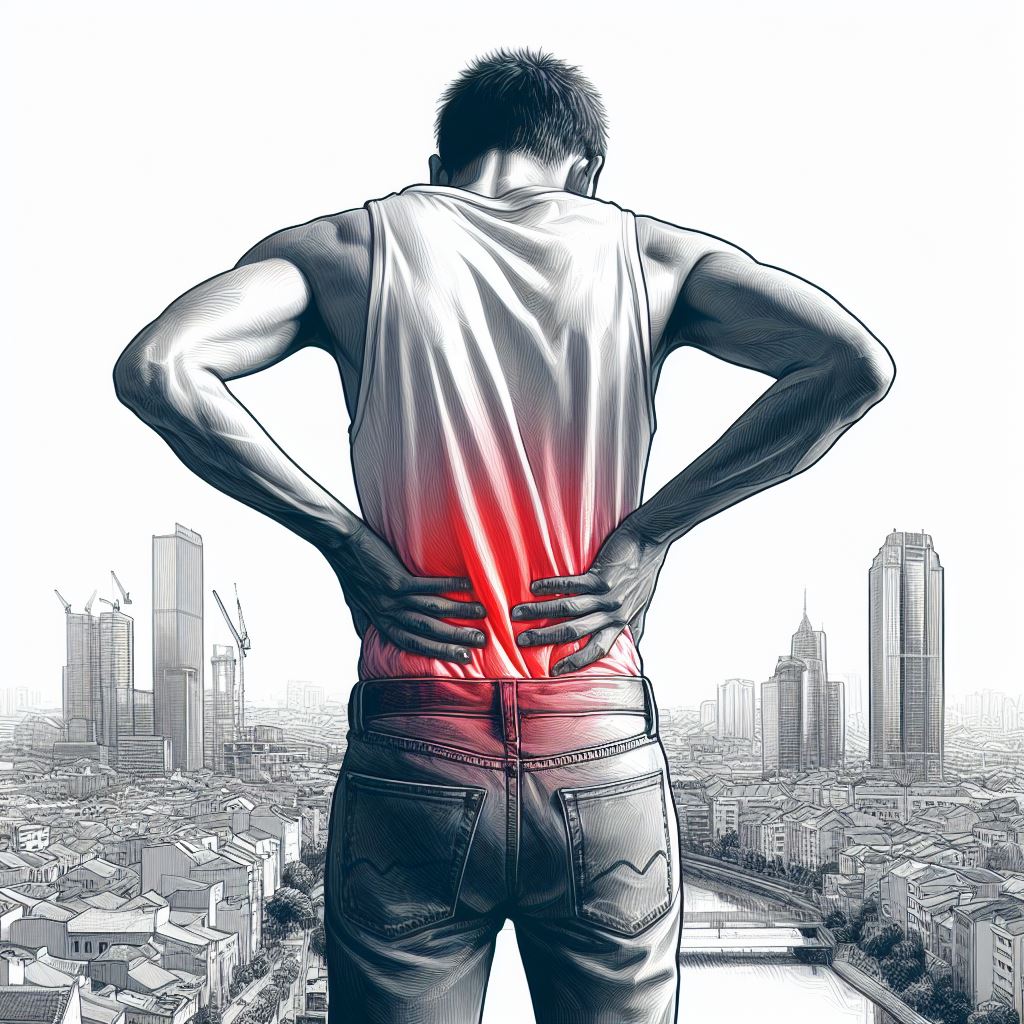If you’ve ever felt a twinge in your lower back, you’re not alone. Lower back pain is a widespread concern, affecting a wide range of individuals across various ages and lifestyles. It can creep up after a long day at your desk, post an intense gym session, or even without any obvious trigger.
To effectively address lower back pain, you need to get familiar with the spine’s structure. Your lower back—also known as the lumbar region—plays a pivotal role in your body’s movement and support. It’s a complex network of bones, muscles, nerves, and tissues that work in harmony. Disrupt this harmony, and pain can ensue.

Nature of the Pain
Recognizing the nature of your lower back pain is crucial. Is it a sharp, sudden onset, perhaps lifting something the wrong way? That’s acute pain. Or maybe it’s been building over time due to poor posture or other underlying conditions—that’s chronic pain. The approach to managing each can be quite different.
Moreover, your daily habits have a significant impact on your back’s wellbeing. The way you sit, how often you move, the quality of your mattress, and even your emotional stress levels can contribute to lower back pain. It’s not just about accidental injuries but also about the subtle, everyday choices you make.
Now, before you jump into any exercise routine to soothe that ache, there’s something I’m going to stress: safety first. You can always adjust your approach down the road, but starting off on the right foot will help ensure long-lasting relief and prevent further harm.

Preparing for Exercise: Safety Tips to Protect Your Back
Now that you understand more about lower back pain, you’re going to want to ensure you’re exercising safely to aid your recovery. Before you even think about hitting the mat, it’s crucial to consult with a healthcare professional. They can assess your condition and green-light the activities suitable for you. This isn’t just about being overly cautious; it’s about personalized care.
Warming up is your next step. You can start with simple activities that increase your heart rate and get your blood flowing. Gentle stretches are also a good way to signal to your body that it’s about to work harder. I’m not saying you need to run a marathon to warm up, but dedicating 5-10 minutes to get loosened up can make a world of difference.
Proper Form Maintenance
Maintaining proper form is non-negotiable. If you’re doing an exercise incorrectly, you might as well not do it at all. Incorrect form could end up doing more harm than good, and that’s the last thing you need when you’re working through back pain. YouTube is a goldmine for form tutorials, or better yet, a physical therapist can show you the ropes.
Lastly, understand your limits. Lower back pain is a clear signal from your body urging you to take it easy. If you feel any sharp pain or discomfort beyond the typical ‘good’ workout burn, it’s time to stop. You can always adjust your approach down the road as you build endurance and strength.
Choose exercises that resonate with you, and you’re more likely to stick with them. Plus, when you enjoy what you’re doing, it doesn’t feel like a chore, and your journey to a stronger back becomes that much smoother. Up next, I’m going to introduce you to some of the best lower back exercises that can help you on this path.

Top Recommended Exercises for Alleviating Lower Back Pain
Getting your back on track can feel tricky, but incorporating the right exercises into your routine is a solid start. Here are some top picks that can make a difference.
Exercise 1: The Child’s Pose stretches not just your lower back but also your glutes, which often contribute to back discomfort. It’s a gentle way to relieve tension after a long day. To do this, begin on your hands and knees, sit back on your heels, stretch your arms forward, and let your forehead rest on the ground.
Exercise 2: Strengthening your core is crucial for lower back health. Pelvic Tilts are an excellent low-stress exercise for this. Lie on your back with knees bent, flatten your back against the floor by tightening your abdominal muscles, and hold. It may seem subtle, but the strength you’re building will provide lasting benefits.
Exercise 3: I’m a big believer in the power of Low-impact Aerobic Activities to help heal and protect your lower back. Walking and swimming are fantastic because they increase blood flow without the jarring impact that can worsen pain. Plus, it’s a chance to get out and enjoy some fresh air or the calming effect of water.
Remember, with these exercises, the aim isn’t to push through pain. If something hurts, take it as a sign to ease up. It’s about finding a balance between movement and comfort. Your first attempt doesn’t need to be your last; you can always adjust your approach down the road.

Maintaining a Healthy Back: Long-term Strategies and Advice
Your journey to a stronger, pain-free back doesn’t end with regular exercise. It’s a lifelong commitment that extends into various aspects of your daily life. I’m going to share some key strategies to keep your back in tip-top shape.
A balanced diet isn’t just good for weight management; it’s crucial for bone and muscle health too. Choose foods rich in calcium and vitamin D to nourish your spine. Staying hydrated helps maintain elasticity in the tissues of your back, so keep that water bottle handy.
Desk Sitting
If you’re like many folks spending hours at a desk, it’s imperative to take regular breaks. Stand, stretch, or just walk around a bit – your back will thank you. Also, invest some time in creating an ergonomic workspace. Adjust your chair, monitor, and keyboard so you can maintain proper posture without straining your back.
Minor adjustments to your routines can make a big difference. Something as simple as wearing comfortable shoes or being mindful of how you lift can prevent unnecessary strain on your lower back. And here’s a pro tip: sleep matters too. Choose a mattress and pillow that support your spine’s natural alignment.
Listen to your Body
There may be times when despite your best efforts, the pain doesn’t subside or it gets worse. Listen to your body – if it’s signalling for help, don’t ignore it. Scheduling a visit with a healthcare provider can lead to specialized care tailored to your specific needs.
I really hope that you incorporate these practices into your daily life. Remember, your first attempt doesn’t need to be your last. You can always adjust your approach down the road. Taking care of your back is a continuous process and the results—reducing or eliminating that lower back pain—are absolutely worth it.

